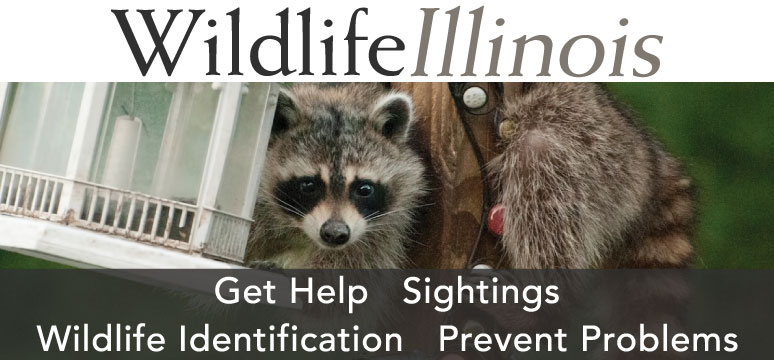
A female or juvenile American redstart warbler forages for insects among the branches of a tree. Photo by Grayson Smith, USFWS.



A female or juvenile American redstart warbler forages for insects among the branches of a tree. Photo by Grayson Smith, USFWS.
Migrating species remind us that the Natural World extends far beyond our backyards and other nearby habitats. Migrators are messengers telling us there’s much more out there. Whether it’s October monarchs drifting southwestward or an overhead ”V” of March Canada geese that still fly northward, both epitomize these natural connections. However, a diverse assembly of warblers proclaim these messages about this greater biodiversity from on high in the treetops.
Illinois’ Warblers

Just over 40 species of warblers have been observed in Illinois, many common, some uncommon, and a few rare. One so rare—Bachman’s warbler—that its possible existence in our state is based on a few scanty reports: the most credible coming from early ornithologist Robert Ridgway of contact made in Wabash County in 1878.
About half of Illinois’ warbler species currently nest or once nested in the state. But because of wholesale habitat destruction, total numbers of all warblers, as well as numbers of species that breed here, have declined. Species such as the Northern parula, Kentucky, and yellow-throated warblers still nest in what is left of the large contiguous tracts of southern Illinois forests where some protection from nest parasitism from cowbirds is afforded. Cowbirds prefer woodland-edge habitat over contiguous interior forest. They lay their eggs in warbler nests, and the warblers hatch and brood the cowbird young that take over. Also, relatively less woodland edge associated with these large uninterrupted tracts of forest means less destruction of nests by woodland-edge loving raccoons and blue jays that also eat warbler eggs and broods.

Other warbler species that breed in most of Illinois, such as the American redstart and yellow warbler, have suffered from habitat loss. Both species take up residence in forest riparian areas and prefer to build nests in the crotches of black willow branches. Well-known Illinois Natural History Survey ornithologists Dick and Jean Graber suggested in 1983 that destruction of forest riparian habitats replete with willows and silver maples that had occurred since 1900 had reduced American redstart numbers.
In terms of sheer numbers of warblers seen, for most Illinoisans, the greatest opportunity to see any warblers are those that migrate. Why? Our state has become increasingly urban, and urbanites have less opportunity to see resident warblers. Roughly half of warbler species—some of which are the most numerous—that frequent our state, breed in the Upper Midwest and Canada and are here only as migrants. And of the species that historically have nested here, most have had ideal habitat destroyed, lessening the chance that Illinoisans will see them.
The greatest chance to actually identify most of what you see is during spring migration. During fall, many warblers are juveniles and lack the clearly recognizable markings of adults. Also in fall, adults lose some of their showy, distinct breeding plumage, making them harder to tell apart.
Making Contact
During late April and May, with binoculars and notepad in hand, spend time in a nearby habitat, be it your backyard, urban park, or close-by woodland. Some species, such as the yellow-rumped and Tennessee warblers, can be very abundant and easily identified. Others, including the chestnut-sided, magnolia, Blackburnian, Cerulean and black-and-white warblers can be seen most years, as can be American redstarts.

Be ready and watching when warblers are moving through, which may be only a few days in some areas. For most species, scan the tops of trees where most feeding occurs. Be looking when warblers are most active and winds are minimal. East-facing woodland exposures on calm, sunny early mornings are ideal. The Sun’s rays are warming insects, making them most active. As a result, warblers are vigorously feeding. Remember to take notes and compare sightings through the years: a simple and rewarding pleasure that is yours for the taking!
Migrating Birds—Part of Our Natural Heritage

Well-thought-out and cared for backyards give homage to migrating birds. When you see a migrating warbler on your home ground, be it a less common pine warbler or an abundant yellow-rumped, it represents a connection to and a symbol of our natural heritage that includes all of Nature. Some migrating birds pay us only aerial visits. Look up and listen. Sandhill cranes are once again flying across Illinois in numbers, sometimes so high they can only be heard, as coined by Aldo Leopold “trumpet(s) in the orchestra of evolution” with messages of hope for the future. For those of us who cannot live without migrating birds, communing with them is an inalienable right just as surely as are life, liberty and the pursuit of happiness.
Your backyard can be a window—a portal—to increase your understandings, appreciations and connections to the rest of the Natural World.
Robert J. Reber is an emeritus faculty member in the Department of Food Science and Human Nutrition of the University of Illinois at Urbana–Champaign. He has been a lifelong student of many aspects of the Natural World, including archaeology. Bob has served as a managing editor and author for publications such as The Illinois Steward magazine and the Illinois Master Naturalist Curriculum Guide.
Submit a question for the author